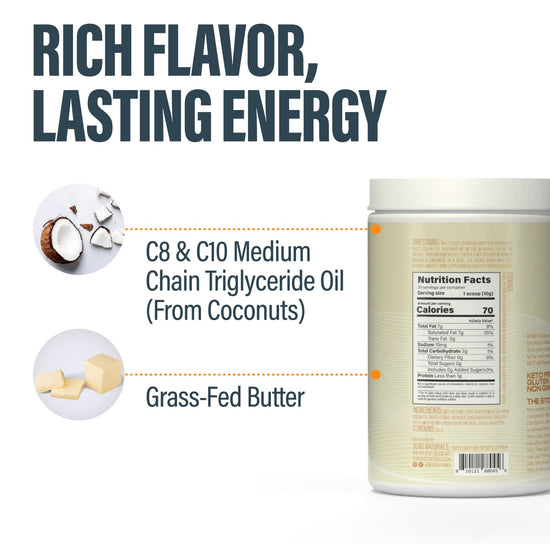Table of Contents
- Introduction
- The Evolution of Non-Dairy Creamers
- How Non-Dairy Creamers Are Made
- The Nutritional Aspect of Non-Dairy Creamers
- Making Your Own Non-Dairy Creamer
- Conclusion
- FAQ
Introduction
Did you know that the average American consumes over 400 million gallons of non-dairy creamer each year? For many, this creamy addition to coffee or tea is a staple, providing a smooth texture and a touch of sweetness without the use of dairy. However, many consumers remain unaware of what actually goes into these products. Today, we’re diving deep into the fascinating world of non-dairy creamers, exploring their ingredients, production processes, and the history behind their invention.
Non-dairy creamers have evolved significantly since their introduction in the mid-20th century. Initially designed as a shelf-stable alternative to milk and cream, these products have found their way into homes and coffee shops across the globe. Despite their popularity, there remains a cloud of confusion surrounding their ingredients, particularly regarding terms like "non-dairy" and "dairy-free."
In this blog post, we’ll uncover the intricate process of how non-dairy creamers are made, the variety of ingredients used, and the implications for consumers. By the end, you'll gain a comprehensive understanding of what’s in your cup and the choices available to you in the realm of cream alternatives. We’ll also touch on insights related to our mission at BUBS Naturals, where we prioritize clean ingredients and transparency in our products.
The Evolution of Non-Dairy Creamers
A Brief History
The journey of non-dairy creamers began in the 1940s when Holton "Rex" Diamond, an employee at Rich Products, experimented with soy protein to create a stable coffee additive. The first commercial success came with Melvin Morse and Dick Borne's "Mocha Mix" in 1950. This marked the beginning of a trend that would lead to a plethora of options available today.
As consumer preferences evolved, so did the formulations. Initially made from dehydrated milk and sugar, modern non-dairy creamers often feature a blend of vegetable oils, sweeteners, and flavorings. This transformation reflects both advancements in food science and a growing demand for alternatives that cater to dietary restrictions and preferences.
Understanding the Terms: Non-Dairy vs. Dairy-Free
One of the most significant points of confusion in the non-dairy creamer market is the terminology. "Non-dairy" does not necessarily mean that a product is free from all dairy-derived ingredients. For instance, many non-dairy creamers contain sodium caseinate, a milk protein derivative. This can be particularly concerning for vegans or those with dairy allergies. In contrast, "dairy-free" products are explicitly formulated without any dairy-derived ingredients, making them suitable for a broader audience.
Understanding these distinctions is crucial for consumers who are navigating dietary restrictions or making conscious choices about the products they consume.
How Non-Dairy Creamers Are Made
The Ingredients
The production of non-dairy creamers typically involves a combination of the following key ingredients:
-
Vegetable Oils: Often hydrogenated or partially hydrogenated, these oils replicate the creamy texture of dairy fats. Common sources include palm oil, soybean oil, or coconut oil.
-
Sweeteners: Many non-dairy creamers contain added sugars or artificial sweeteners to enhance flavor. High fructose corn syrup is commonly used, although alternatives like cane sugar or agave syrup can also be found.
-
Stabilizers and Emulsifiers: These ingredients help maintain the consistency and prevent separation of the oil and water components. Common emulsifiers include mono- and diglycerides, which help blend the oil and water phases.
-
Flavorings: Natural and artificial flavors, such as vanilla or hazelnut, are often added to enhance the overall taste profile.
-
Sodium Caseinate: As mentioned earlier, this is a milk-derived protein that provides a creamier mouthfeel and is often included in many non-dairy creamers despite the "non-dairy" label.
The Manufacturing Process
The process of making non-dairy creamers involves several key steps:
-
Mixing: The base ingredients, including vegetable oils and water, are combined in large mixing tanks. This mixture is heated to facilitate emulsification.
-
Emulsification: During this stage, emulsifiers are added, and the mixture is subjected to high shear mixing. This process creates a stable emulsion, preventing the oil and water from separating.
-
Flavoring: After emulsification, flavorings and sweeteners are added. The mixture is blended until smooth, ensuring that all flavors are evenly distributed.
-
Homogenization: This step involves passing the mixture through a homogenizer, which reduces the size of fat globules, resulting in a smoother texture.
-
Pasteurization: The creamer is then pasteurized to eliminate any potential pathogens and extend shelf life.
-
Cooling and Packaging: Finally, the creamer is cooled and packaged into containers for distribution. Liquid creamers are typically refrigerated, while powdered versions can be stored at room temperature.
The Role of Technology
Advances in food technology have greatly improved the processes for creating non-dairy creamers. Innovations in emulsification techniques and flavor enhancement have led to creamers that not only taste better but also offer improved stability and shelf life. This has opened up a market rich with options, catering to diverse consumer preferences and dietary needs.
The Nutritional Aspect of Non-Dairy Creamers
Are They Healthy?
When considering whether non-dairy creamers are a healthy addition to your diet, it's essential to evaluate their nutritional content. Many non-dairy creamers are low in calories and fat compared to traditional cream, but they can contain added sugars and unhealthy fats.
-
Trans Fats: Some non-dairy creamers may contain trans fats, which are linked to various health issues, including heart disease. It is advisable to check the ingredient list for hydrogenated oils and choose products that are free from trans fats.
-
Caloric Content: While non-dairy creamers are often marketed as "light" or "low-calorie," it's crucial to read the nutrition label, as serving sizes can be misleading. A few tablespoons can quickly add up in calories, particularly if you’re using multiple servings in your coffee.
-
Alternative Options: For those seeking a healthier alternative, options such as homemade non-dairy creamers made from coconut milk, almond milk, or oat milk can provide a cleaner ingredient list and avoid the undesirable additives found in many commercial products.
The BUBS Naturals Approach
At BUBS Naturals, we emphasize the importance of clean, high-quality ingredients in our products. Our mission encompasses not only adventure and wellness but also transparency and integrity. We believe in providing options that support an active lifestyle without compromising on quality. This is why we encourage our community to explore alternatives like our MCT Oil Powder, which provides sustained energy and mental clarity without the additives often found in traditional creamers.
Making Your Own Non-Dairy Creamer
For those who wish to have complete control over their creamer ingredients, making your own non-dairy creamer at home is a simple and rewarding process. Here’s a quick recipe to get you started:
Homemade Almond Milk Creamer
Ingredients:
- 1 cup almonds
- 4 cups water
- Sweetener of choice (maple syrup, honey, or stevia)
- Flavoring (vanilla extract, cocoa powder, etc.)
Instructions:
- Soak the Almonds: Soak almonds in water for at least 8 hours or overnight to soften them.
- Blend: Drain and rinse the almonds, then blend them with 4 cups of fresh water until smooth.
- Strain: Use a nut milk bag or fine mesh strainer to separate the almond milk from the pulp.
- Flavor and Sweeten: Add sweetener and flavorings to taste, then blend again to combine.
- Store: Keep your homemade creamer in a sealed container in the fridge for up to a week.
By creating your own non-dairy creamer, you can customize the flavors and sweetness to your liking, ensuring that your morning brew aligns perfectly with your wellness goals.
Conclusion
In conclusion, understanding how non-dairy creamers are made offers valuable insights into the ingredients and processes behind these popular products. While they provide a convenient alternative to dairy, it’s essential to be mindful of what’s in your cup. Whether you choose commercial creamers or opt for homemade versions, being informed allows you to make choices that align with your dietary preferences and health goals.
As we at BUBS Naturals continue to support your wellness journey, we invite you to explore our clean, functional products that enhance your active lifestyle. Together, we can prioritize health, adventure, and giving back to our community, all while enjoying the little pleasures in life—like a perfectly creamy cup of coffee.
FAQ
What is the difference between non-dairy and dairy-free creamers?
Non-dairy creamers may contain milk-derived ingredients like sodium caseinate, while dairy-free creamers do not include any dairy at all.
Are non-dairy creamers healthier than traditional cream?
Non-dairy creamers can be lower in calories, but they often contain added sugars and unhealthy fats. It's essential to read the nutrition labels carefully.
Can I make my own non-dairy creamer?
Yes! Homemade non-dairy creamers are easy to make using ingredients like almond milk, coconut milk, or oats, allowing you to customize flavors and sweetness.
How long do non-dairy creamers last?
Liquid non-dairy creamers typically last about 7-10 days once opened if refrigerated, while powdered versions can last much longer if stored in a cool, dry place.
Are there any alternatives to non-dairy creamers?
Yes! Alternatives include homemade options like nut milks, coconut cream, or our MCT Oil Powder, which provides a clean source of energy without the additives.
By embracing a more informed approach to our food choices, we can cultivate a lifestyle that aligns with our values and health goals. So, whether you enjoy your coffee black or with a splash of creamer, we’re here to support you on this journey!
Written by:

Butter MCT Oil Creamer
BUBS Butter MCT Oil Creamer (formerly Halo Creamer): Scientifically-Backed Brain and Body Fuel
BUBS Butter MCT Oil Creamer is your go-to for clean, fast-acting energy and focus, no crash included. It blends creamy grass-fed butter with fast-acting MCT oil powder (C8 and C10) to kickstart your day and keep you sharp. The MCTs go straight to work, giving your brain a quick boost while the grass-fed butter supports digestion and gut health.
Together, they help curb cravings, keep you feeling full longer, and support steady energy throughout the day—perfect for fueling your mornings or powering through the afternoon slump.
Starts at $36.00
Shop

